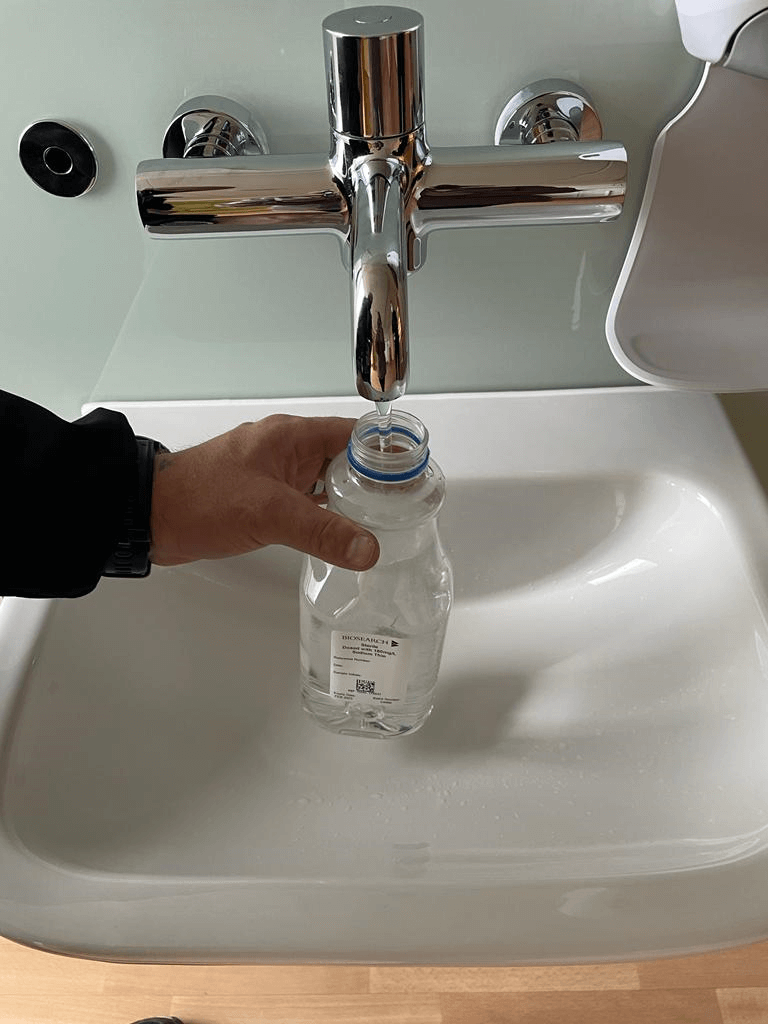What you didn’t know about water sampling
Prevention is better than cure;
A regular, simple practise of water sampling can help stop harmful bacteria living in your water system and help prevent an outbreak of legionnaires disease and other illnesses but there is a lot more to water sampling than you may think.
Water, whether for a public municipality, water facility or business/home, must be tested regularly to make sure it is safe and free of potential health/environmental risks and water sampling is very important for the correct outcome of water analysis.
Regular water testing allows building owners and operators to:
- Check to ensure their chosen compliance regime is fit for purpose
- Ensure water is suitable for drinking
- Track changes over time
- Determine the effectiveness of a water treatment system
But here are a few things you maybe did not know about water sampling.
It’s not only drinking water that needs to be tested

Many people think it is just water coming from the tap that needs to be tested this is not the case. While it is vital drinking water is tested for bacteria such as legionella, e-coli etc the water in essential industrial equipment such as cooling towers & steam boilers also needs to be tested frequently.
Some other testing carried out include;
- pH & alkalinity
- Iron & Manganese
- Hardness
- Chloride
- Soduim
The water in these machines needs to be of good quality to ensure the longevity of them as bad water can lead to scale, rust and corrosion so frequent water sampling will let you know at early stages if there are any issues.
There is a precise method to taking samples
Taking water samples looks fairly easy right? Wrong. To take samples you must adhere to a strict few rules or the results wont be accurate.
- The bottles must be 500ml plastic or 100 ml sterile bottle (depending on what is being tested)
- These bottles but have labels on them so that the date, time and sampling location can be recorded on them
- Your hands must be cleaned and sterile gloves should be worn to avoid contamination
- Care should be taken to ensure that the running water does not come in contact with any object during sampling. An air space is left in the bottle to aid proper mixing prior to analysis whilst ensuring a minimum of 400ml of sample is taken
After taking the sample the must be sent to the laboratory immediately. It should not be left any longer than 24 hours, if time exceeds 30 hours results for bacteria may be inaccurate

Its not only bacteria that we test the water for
As outlined previously, while bacteria are one of the main things we test for it is not the only thing. Legionella, E – Coli and Coliforms are the most common bacteria samples carried out, we also test for pseudomonas among others. We also test for;
Chemicals
Chemicals are tested in water to determine if they are present and, if so, are they within acceptable limits. Chemical parameters that are present in drinking water can be caused by chemicals dissolving into water from pipes, chemicals carrying over from the treatment process, chemical reactions occurring between different materials in the water, or even runoff from the environment.
Metals
Metals occur naturally in the environment, where some metals are essential for life others, such as Lead and Mercury, are not essential and can have negative effects on health. Copper is an example of a metal that is essential in your diet but is toxic at high concentrations.
Other Parameters
This parameter grouping includes all other tests not including Bacteria & Protozoa, Chemicals, and Metals. Testing for these parameters is required to signal if there is a potential problem with the water supply that requires investigation or that may point to a more serious problem.
Recording results is just as important as taking samples
Ensuring accurate record keeping is JUST as important the sampling itself.
As outlined earlier, each sample should be labelled correctly to ensure that samples don’t get mixed up or lost. Many companies, including ourselves have a trustworthy “E-system” which keeps all records online, safe in one place. These are easily accessible to clients and consultants and show clear and precise information.
Water samples tell a lot about your system and frequent testing is important ensure you are providing a clean and safe supply of drinking water by:
- Identify existing problems
- Preventing issues that may arise
- Ensuring water is suitable for the intended use, especially if used for drinking by humans and animals
- Tracking any changes over time
The quality of a water source may change over time, even suddenly and by monitoring your water any changes won’t go unnoticed even if the water may look, smell, and taste the same
Routine sampling helps to safeguard the health and well-being of building occupants, tenants, and visitors to any facility.
Contact us today to arrange your routine water sampling servicing.
+353 18 252 775 info@aquachem.ie






